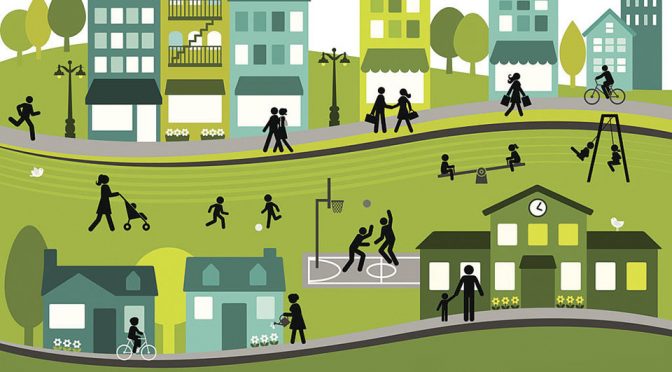What does the center do?
The Center for Economic Information uses geographic information systems tools and surveys housing conditions in the metro area on a regular basis. That information allows CEI to associate housing conditions with numerous other indicators, as well as create a baseline to evaluate the impact of policy changes on neighborhoods.
What have been some of your key findings in the past?
We had a large grant to do a study on obesity several years ago. It revealed some interesting issues involving access to good food and the primary causes of childhood obesity. It was a joint study with the Department of Psychology that analyzed the shelves of grocery stores and restaurants where people lived. We went into houses with medical personnel to do BMIs in randomly selected areas. We compared those numbers with where they were living and whether they had accessibility to food and safe streets to exercise in. The latter is an important factor and reduces the incidence of obesity significantly.
We heard you developed City Scope—a tool used to visualize data. Can you tell us more about it and how it’s being used?
City Scope is a website, that allows you to look at maps, such as a map of the housing conditions of individual houses (roof, paint, walls, porches, streets, sidewalks, curbs, lighting, shrubs, lawn, litter). It’s a free app and neighborhoods use it for planning purposes. It also has police and census data as well as employment info. The most recent info was taken in 2012, so we’re working to update it. There is no fundi9ng for CityScope, so updates are done when we have spare time (a rare occurrence). There are several aspects to Kansas City’s recent entry into the Smart Cities initiative and we help inform them.
How have you seen others use this tool?
Access to information is key—good info information informs good decisions. Data should be available democratically, not just for those with resources. UMKC is focused on urban issues and helping underserved areas of the metro. We’ve helped community groups learn how to use the tool. Emanuel Cleaver used it to create a green impact zone in the Ivanhoe/Blue Hills/Mannheim Park neighborhoods.
What projects do you have right now?
We are currently working with Children’s Mercy and the U.S. Department of Housing and Urban Development to identify factors contributing to childhood asthma, lead poisoning and injury. One theory we are testing is whether homes that successfully keep airborne lung irritants outside result in a reduced incidence of asthma. For analysis, we are associating our housing survey results with address-level medical records from Children’s Mercy and other controls such as proximity to roads, demographic variables and environmental data.
What impact could this study have?
If there is public health money available, where should we concentrate it? In this case, we may find that it would be wise to invest it in sealing a house better: fixing roofs, windows and foundations to keep mold out. In addition, we might be able to save the health system money if we discover that our cost-effective exterior method of surveying is as good a predictor of childhood asthma as the interior study of homes that Children’s Mercy is currently doing. Eventually, if our method is a good predictor of childhood asthma, we may expand the method to adult cases.
How does this strengthen the relationship of UMKC and the city?
Access to information is key — good information informs good decisions. Data should be available democratically, not just for those with resources. UMKC is focused on urban issues and helping underserved areas of the metro. The common perception is that within a university, academics are protective of their own research, but we want to share — and neighborhoods use our data all the time. Ultimately, working together with partners in the community, we will be able to do more than we could by working separately.

